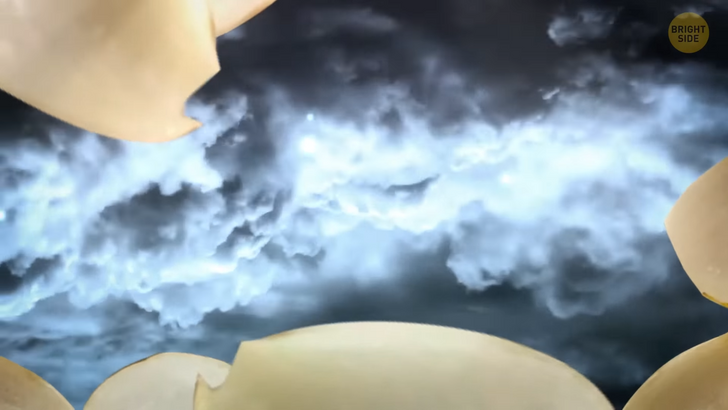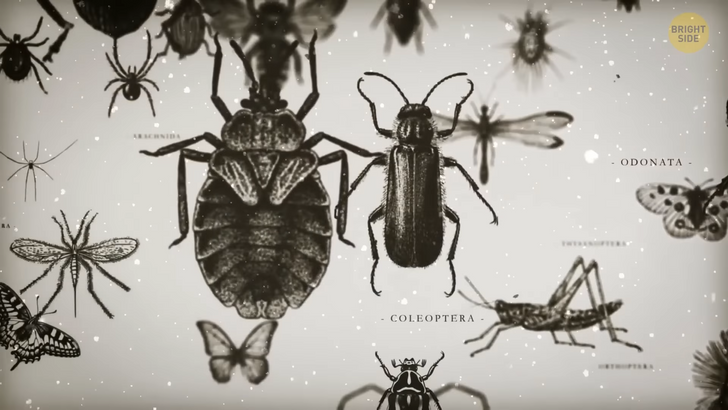My In-Laws Humiliated Me in Front of the Whole Family—I Refuse to Swallow That

Urbania. Sounds like a made-up city from a fairy tale. But it’s not. It is real and located in central Italy. The town’s name isn’t the only strange thing about it. Every year, the local newspaper and television publish a strange weather forecast. It is based on onion wedges.
Yes, you’ve heard it correctly. Italians from this region [Province of Pesaro and Urbino] eagerly look forward to a forecast based on a vegetable.

The tradition dates back to the Middle Ages. It is kept alive by the local schoolteacher [Emanuela Forlini]. Every January 24th, she cuts a yellow onion into quarters. Then she divides them into wedges. 12 of them for each month of the year. They lie neatly on her kitchen cutting board, facing east.
The following morning [January 25th], the onion is ready for interpretation. Because she had sprinkled them with salt, the wedges changed their texture. The woman uses these clues to forecast the weather for that year. She has been doing this for three decades. And before her, her father did it. Before him, her grandfather. You get the gist. Onion reading has become a family tradition.
Historical records show that this practice has been going on in Urbania for centuries. Back in the day, farmers used this method of forecasting the weather to help agriculture. It was important to know exactly when to plant seeds and when to harvest crops.
The method must have been accurate because up until the beginning of the 20th century, locals still trusted onions more than the official weather forecast. This isn’t surprising: the first weather forecast based on scientific data was published in a British newspaper [The Times], in 1861. Before this time, people did all sorts of things to predict the weather. The methods they used might seem funny to us today.

Take the woolly bear caterpillar [Pyrrharctia isabella] as an example. This species lives in the United States and southern Canada. The legend goes that you can determine how harsh the next winter will be just by looking at the animal’s color pattern. If the color brown is dominant, then the winter will be mild. That’s an odd way to predict the weather. But believe it or not, it does some grounding in science.
You know who entomologists are? Yes, those are the scientists who study bugs. Their research showed that the caterpillar’s color is connected with how much food it has had. But there is a twist. The color reveals the harshness of the winter of the previous year. Telling the future is not the woolly bear caterpillar’s forte.
People think ladybugs bring luck, but they are more than good luck charms. Have you ever heard of the saying: When ladybugs swarm, expect a day that’s warm? This is actually true. When the weather is warm outside, these lovable insects leave their hiding. But as the temperature drops before a rain shower, they fly in search of cover.
Frogs can also predict rain. Right before the first droplet, these amphibians croak louder. They actually do this because they are about to mate. Frogs lay eggs in bodies of freshwater. If rain is coming, then water levels in ponds will rise. This increases the animal’s chances of finding a partner to produce tadpoles.

Have your parents told you to stay away from hornets’ nests? They were right. But the nests of bees, wasps, and hornets make for excellent weather stations. When they start building nests higher than usual, expect a colder winter with a lot of show. You see, hornets cannot survive temperatures lower than 50 degrees Fahrenheit. That’s why they want to stay clear of the cold as much as possible.
Another animal that bulks up for winter is the squirrel. Take notice of these cute rodents the next time you go hiking in late fall. If they seem chubbier than usual, then the winter is going to be cold. And remember Scrat from Ice Age? The hyperactive squirrel that was constantly chasing after an acorn? When you see a squirrel acting like Scrat, then that’s a sure sign of a long winter approaching. The rodents want to stock up before Mother Nature closes the shop.
Have you noticed more cobwebs in your house recently? That’s just spiders sensing bad weather approaching. Also, if spider webs are larger than usual, then they are trying to catch more prey. That’s their way of preparing for a long winter. Livestock prepares for this period by growing thicker fur. If you live in the countryside and notice that sheep are woollier than usual, then it’s time to invest in a warm winter jacket. Are there mole hillocks in your backyard? Apart from tripping on them, you can use them as tiny weather stations. The deeper they are, the harsher the winter.

Let all those animals rest a bit. Looking at the sky can also tell you the weather — duh. There is a popular theory that every foggy day in August equals a day of snowfall in winter. Pretty exact math for something that’s just a belief. And then there is the Moon. Science already knows that it has power over ocean tides. After all, the saying: clear moon, frost soon, has been around for a while.
When the moon is shining bright in a cloudless sky, it’s going to be chilly the next morning. Looking at clouds also gives hints about the weather. White clouds high in the sky indicate a clear and sunny day. When their color changes to black and they are set lower in the sky, expect rain. The clouds’ shape is also revealing. If they are ragged when you look at them from below, open your umbrella. It’s going to rain soon.
Remember the onions from the beginning? They are not the only plants that can forecast the weather. In the Ozark Mountains [United States], there is a folklore belief that involves persimmons. When you cut in half the seed of this sweet fruit, look for the shape inside.
When it resembles a spoon, expect snow that winter. But if you see a fork, then the cold season will be mild. A knife shape, and the weather will be windy and icy. This strange prediction based on cutlery has some logic behind it. American persimmons ripen in September and October. It shouldn’t be surprising that people use this fruit to inquire about the winter ahead.

The United States is the world’s second-largest producer of apples. That makes it easy to test another theory. If apple trees produce more fruit than usual, then the upcoming winter will be harsh. There are two explanations why this might be true. The first is that apple trees produce more food for the animals. The second is that they want to maximize the number of seeds. Just in case the plants don’t get through the cold spell.
Walnut trees use a similar tactic. People figured out that walnuts have a thicker outside shell in preparation for a winter colder than usual. The same goes for hickory trees and oaks.
Pinecones are more than a table decoration. The phrase: Open pine, the weather’s fine, says it all. Pinecones open their scales during warm and dry weather. They want to spread their seeds as far as possible. But when the weather takes a turn for the worse, they close them. Cold or damp air won’t disperse pine cone seeds far.

Today, no one goes into the forest to see how plump squirrels are. Nor do they take out a ruler to measure pinecones. All the info about the weather we need is inside our smartphones and on the Internet.
In the 1950s, computers took over weather forecasting, and they have been doing it ever since. But inaccurate weather predictions still happen. Long-term weather forecasts are especially challenging. That’s because there are so many factors at play. Wind, humidity, temperature, air pressure, and clouds are just the tip of the meteorological iceberg.
Although it’s just a tradition, Italian onion reading might not be so ridiculous after all. At least the nice lady uses the onions to make soup after everything is said and done.











